Welcome to the 2018-2019 school year!
Each year, I look forward to this night. The inherent possibilities that lie in the anticipation of a beginning fill me with excitement, eagerness and appreciation. Tonight, anything is possible for this school year. As I prepared for tonight, three main themes or threads appeared.
The first thread involves the past. This year marks Greenhouse’s 99th year of operation. Next school year, 2019-2020, is our Centennial year. Greenhouse will be 100 years old. What an incredible milestone! I think of the thousands of children, families and teachers who have passed through our doors and I am awed and inspired. Across the years, so much of what makes Greenhouse special has stayed consistent. So much of what we do and who we are today, has clear and direct links to our past.


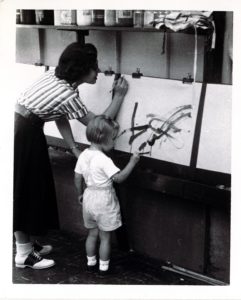
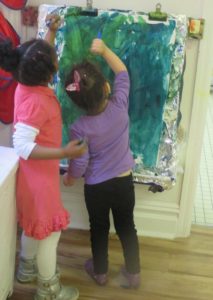
Right from our very beginning, we’ve upheld the principle that young children learn through play. In our long, proven history we have stayed true to our promise to protect early childhood and young children’s right to play, explore and discover. This year, we will plan a celebration that is worthy of the past influences that Greenhouse has had on children, families and our community. So our past is heavy on my mind tonight.
But my eyes are also turned to the future, the second thread. Who will Greenhouse be in the next 100 years? This year, in addition to planning our Centennial celebration, we are also doing important work to make sure that Greenhouse is well established to succeed in the future.
This year, we will continue the process of our re-accreditation by Middle States Association. The re-accreditation process is a voluntary strategic planning process that allows us to closely examine our current practices and determine our strengths and areas of growth. It is a vehicle for growth and improvement in both student performance and in the school’s capacity to effect that growth. It also allows various stakeholders to participate in the review and in determining future goals.
The Planning Committee (made up of Trustees, current parents, faculty and administrators) has reviewed our policies and procedures and our parent and faculty survey results. As we move forward, they will continue to be actively involved in the re-accreditation process. Their first point of work was to review some foundation documents, including our mission statement, our beliefs and the profile of our graduate.
Mission Statement
Columbia Greenhouse Nursery School is committed to fostering the healthy emotional, social, intellectual and physical development of young children.
We believe young children learn best through engagement with stimulating materials, interaction with peers in small groups, and relationships with responsive and loving adults. We have carefully planned a warm and nurturing play-centered environment that encourages creativity, exploration, problem solving, independence, positive peer interactions and a sense of community.
In partnership with parents and families we cultivate each child’s uniqueness and strengthen self-esteem through the development of skills, interests, and socialization. We understand the creation of active, life-long learners to be rooted in a child’s positive sense of self, as well as their continuing and joyful curiosity.
Our mission continues to drive our work and helps us to stay true to our vision in our decision making, program development and daily operations. Our mission clearly states our aspirations and vision for Greenhouse. We understand that human development is a tightly integrated unfolding of our young children’s inner worlds. We hold their social-emotional, intellectual and physical development at the heart of our work. We recognize that young children are whole, complex human beings (not just simple brains needing information) and that they need our support in all areas of their human development.
Directly in our mission, we include words like warm, nurturing, relationships, interaction, and community because we believe that young children learn best when they are in supportive relationships with others. Relationships form the very foundation for all learning—without trust, without connection, without love, young children do not thrive. We use words like play, creativity, exploration, and problem-solving, because instead of a list of isolated skills or content areas, we believe these are the behaviors and dispositions young children need to become lifelong learners. Our mission lays out our vision of how we want to support young children’s love of learning through a positive sense of self and joy! There is little joy in drilling a child on letter names. There is little joy found in the text of a worksheet. But oh, the joy of finding all the matching green caps that we will later add to our cap collage! Oh, the joy found in a playful discovery with a friend!


These are the moments during which we see we are touching the future.
After we looked at our mission, our re-accreditation protocol asked that we review our beliefs. We did not have a formal written statement of beliefs to review. (Now seems about the right time to mention that while I thoroughly enjoy visiting the visionary, inspirational land of all that is possible, I do live quite firmly on the ground.) I have been through many of these types of exercises in other organizations and schools; I have done many visionary activities and have seen many end results that feel inauthentic at best, and meaningless at worst. If Greenhouse was truly going to go through this process of identifying our beliefs, I wanted it to feel real, realistic and authentic to the ideals held by the people in our community. As a starting off point, Middle States described a belief system as:
the moral character of a school.
This moves way beyond education pedagogy or philosophy—the belief statement is a declaration of the human values held by the people in our community. This immediately got the Planning Committee thinking about our work from last year around identity. It was here in the readings of the faculty, observations inside the classroom and the conversations of parents, faculty, children and administrators that we were able to able to develop a set of beliefs that reflect those values.
We believe all children, families, faculty and staff deserve an open, safe and mutually respectful school community in which they are seen and valued as an important and equal member.
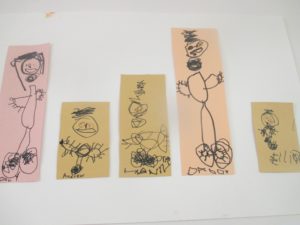



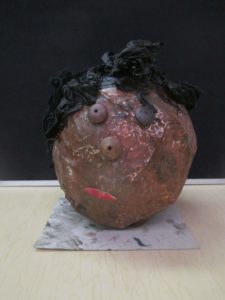


This is the moral character of our community. Every day, we will work to ensure that all members of our community can bring their full selves and families into Greenhouse. We will acknowledge the things that make us the same and the things that make us different; we will find strength in both. One way that we are learning more about and acknowledging the differences found inside our families is through the new family questionnaire that many of you have already returned. Thank you to everyone who shared details about your lives and family with us. This has already helped us to see inside your family’s unique experience.
For example, take a quick look at home language:
Bengali, Chinese, English, Farsi, French, German, Gujarati, Hebrew, Hindi, Italian, Japanese, Korean, Lithuanian, Portuguese, Russian, Spanish, Urdu, Wolof
There are 18 different home languages spoken by Greenhouse families. According to my calculations, 22% of our children speak another language other than English in their home.
This one simple data point shines a light on how our families may be different from one another.
In addition to home language:
Right here in our community—
We have families that were made through biology. We have families that were made through adoption. And we have families that were made with some help from science.
Right here in our community–
We have families with one parent. We have families with a mom and dad. We have families with two moms. We have families with two moms and two dads. We have families that live in the same house. And we have families that live in different houses.
Right here in our community–
We have children with brown skin, honey-colored skin, or peachy skin. We have children that some people call Black. We have children that some people call Asian. We have children some people call White. And we have children that are a perfect mix of their parents’ skin colors; some people call them bi-racial or multi-racial.
Right here in our community–
We have some children called boys. We have some children called girls. We have some children that are exploring exactly what that means for them.
Right here in our community—
We have children that celebrate Eid-al-fitr. We have children that celebrate Christmas. We have children that celebrate Diwali. We have children that celebrate weekly Shabbat. We have children that celebrate birthdays, Saturdays and beautiful sunsets.





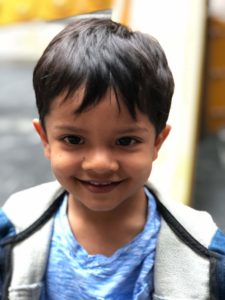
All of these ways of being in the world are seen, valued, and honored in the Greenhouse community.
We believe the early childhood years are a unique stage of human development and should be protected and grounded in play, exploration and self-expression.
In addition to seeing and honoring what makes each of us unique and special, we recognize the things that make us the same. All of the children at Greenhouse are securely in their early childhood years. While there is much room for individual growth within that time, we believe that the early childhood years are a unique stage of human development—these years are unlike any other. It is our responsibility to protect and honor this time and ground these years in play. Play (and protecting a young child’s right to play!) is a deeply held, timeless belief found within Greenhouse’s work. The right to a playful, joyful early childhood experience is universal across all children.
We believe all children are capable, competent and born ready and wired to learn.
Finally, the belief that all children are capable, competent and born ready and wired to learn is a human value in the Greenhouse community. Children do not have to get ready for Greenhouse; we will get ready for them! We are not interested in just teaching the easiest children; we want to serve all children. Human development is complex and we are here to see each child’s individual growth over time. We appreciate that children will develop at their own rate. We will work to support each one of them on their own unique journey.
Personally, articulating and putting these beliefs down in writing was a profound exercise for me. While I began the exercise with what I will call a healthy skepticism, in the end, I was reminded of all that makes Greenhouse special. I am filled with a renewed commitment and I am so deeply proud to be the educational leader of this community and will do my utmost to protect and support its moral character.
After we were done articulating our beliefs, the Planning Committee was asked to articulate the “Profile of the Graduate.” Again, right off the bat, I felt the embers of suspicion and hesitation. “There is not one way for a Greenhouse child to be; I don’t want to put children into a check box and say, ‘This is a Greenhouse kid.’” If we are committed to valuing all children, how can we say at the end of their time here, a “graduate” (their word, not mine) will look like “this?”
On the surface, this is the kind of language that those in early childhood education push back against. At Greenhouse, we do not believe that all four-year-olds will exhibit the same skills, at the same time, with the same intensity. It just isn’t the way early childhood development occurs. Think about other milestones in early childhood—walking, talking, toilet learning—there is a huge, long span of time that is completely appropriate for a young developing child to acquire this skill. How were we going to be able to articulate the Profile of a Greenhouse Graduate in an authentic way that stays true to who we, yet is a real and appropriate expression of the experience of children at Greenhouse?
My work then was to think about outcomes and performance in a way that honors the uniqueness of the early childhood years and is still meaningful. I needed to translate our vision and values into statements and behaviors that directly and developmentally appropriately described early childhood student outcomes.
So (after I was able to quell my own knee-jerk reaction), we delved deeply into a conversation about appropriate student outcomes. One piece of outside evidence that we turned to was, “What do ongoing schools say about our graduates?” In my work with admissions directors for ongoing schools, there are commonalities that I hear about our students. Admissions people are usually taken with how our children are so vibrant, curious and full of life. Our children know that grown-ups care about what they think (and not just about what they know). Our kids are confident in both their actions and in their expression of their ideas. Our children are doers. They observe, solve problems and ask questions. Our children have agency in their own learning. I am also consistently told by ongoing schools that our children are thoughtful community members, kind classroom citizens, and productive learning partners. Our children have learned how to function in a group. How to be heard and how to hear. How to share an idea, and how to work with others.




We also looked at our own curriculum framework and conference reports to identify: what do we expect our kids to know? What skills are important for our graduates? What qualities or characteristics do we want them to demonstrate?
We found clear student outcomes that are directly linked to our vision and values.
A graduate of Columbia Greenhouse is:
Capable, competent, confident and brings a lively mind to new learning situations.
Actively seeking information, connections and understanding, all while sharing their own ideas, thoughts, questions and plans through rich and varied methods of self-expression.
A skilled collaborator that can work with others in pursuit of their shared-interest.
When kids leave Greenhouse, they know that learning happens inside of them. Learning doesn’t come from a teacher or a piece of paper. Learning happens when their brains are thinking, when their body is moving, when they are interacting with ideas, materials and people. They are confident in their ability to do, think, and express. This agency in their own learning allows Greenhouse kids to actively seek out information, make connections and construct their own understanding – all while expressing their ideas, thoughts, and questions, using many different methods of expression. Our kids will show us what they know about the elements of story by organizing and performing a show in front of an eager audience. They will show us what they know about letter formation and the meaning of print while they are painting at the easel. They will show us what they know about numbers, counting and quantity while they are voting for one of the many, many opportunities we plan for them to assert their own voice.



In drafting a picture of a Greenhouse graduate, I want to be perfectly clear—not every child will leave here reading or adding. And that is ok. Every child will leave Greenhouse with knowledge of print. They will be able to share what they know about it. And most importantly, they will believe in their ability to continue to learn, grow and change. Finally, Greenhouse graduates are desired and sought-after community members that can work productively with others in pursuit of their shared-interest. In a world that is becoming more divided and separate every day, we are going to need our children to know how to bring people together. How to listen. How to express themselves. How to balance their own wants and needs with the wants and needs of others and the larger group.
This is life-long learning; this isn’t learning that is finished in preschool. But our Greenhouse graduates have a firm foundational set of skills that will serve them well in this learning. The Greenhouse Graduate has the skills, disposition and behaviors that are needed to be successful in kindergarten and beyond. For me, in identifying these student outcomes, it was important to move beyond a simple list of isolated skills that our kids might have at the end of their time here; instead, to focus on the habits of mind and behaviors that our children will carry with them as they set off into whatever educational setting is next for them.
I know it might be difficult for some of you to even envision the Greenhouse Graduate. You and your two-year-old are just beginning this preschool journey. Tonight is simply your entrance into our community and soon your beautiful, sweet baby will enter into school for the first time. So tonight, I can only ask you to trust me when I say, it will fly by. In a blink. So with the understanding that it flies by so quickly and with all this talk tonight about the past and the future, I want us to end our short time together with our eyes firmly on TODAY.
The last thread—today. One of the beautiful truths of being with young children is that they force you to live in the here-and-now. So quickly they forget the pain of yesterday or the uncertainty of tomorrow. They experience the world with such joy—right now. Our day-to-day responsibility is to keep our rich history, our long-proven record of quality early childhood experiences and our aspirational vision and goals and ground them in the here and now of your children’s daily life.
Today we understand that learning is never opposite of playing.
Today, we know it is our joyful responsibility to prepare an environment that will excite and inspire your child’s lively mind.
Today, we will provide the space, materials and partnership that will create a powerful context for your child’s learning.




By staying present and connected, and establishing this foundation of wonder, exploration, and thinking, we are giving our kids what they need today. Tomorrow, next year, even three years from now as they become a Greenhouse Graduate, they will move through the world as a confident, life-long learner.